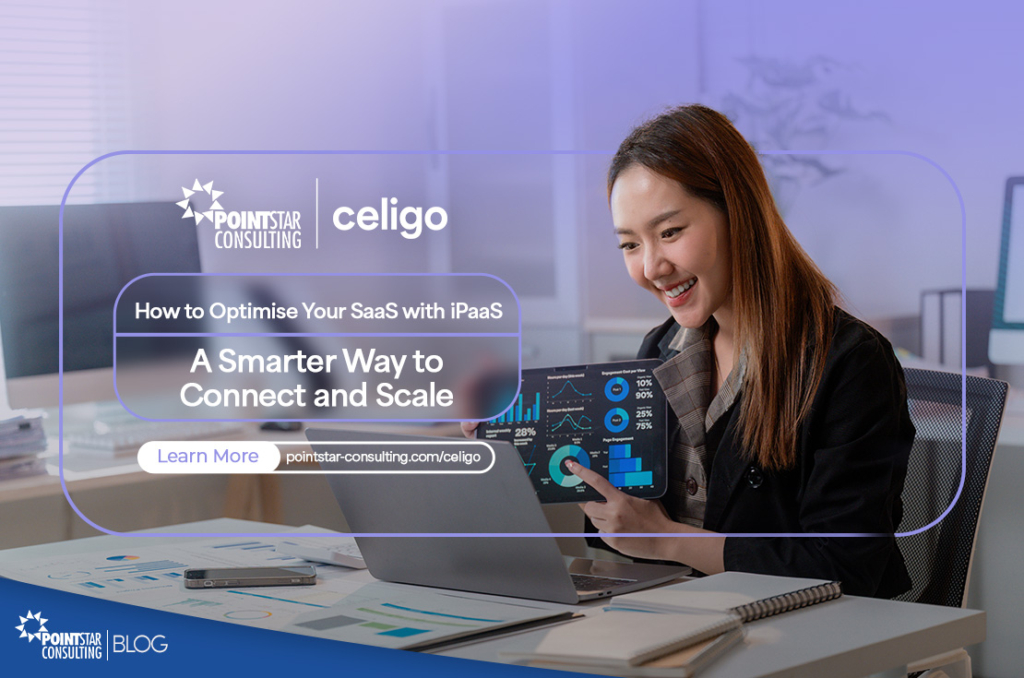The promise of SaaS was to simplify IT and empower teams. But as businesses adopt more best-of-breed applications across departments – from CRM and ERP to marketing automation and expense tracking – they often face a new kind of complexity: app sprawl.
Imagine your business operations as a series of interconnected processes. Your sales team uses a CRM, your finance department relies on an ERP, your HR team has their own system, and marketing uses yet another. Individually, each SaaS application excels at its purpose. But when data needs to flow between them – perhaps a new customer in your CRM needs to be added to your financial system, or sales data needs to inform inventory management – manual data entry, CSV imports, and custom-coded integrations can become bottlenecks.
The good news? There’s a way to restore order and help your SaaS ecosystem work smarter, not harder—with Integration Platform as a Service (iPaaS).
What is iPaaS?
iPaaS is a cloud-based platform that connects disparate software systems and automates business processes between them. Instead of relying on manual data entry or costly point-to-point integrations, iPaaS provides a scalable way to manage integrations through pre-built connectors, workflows, and logic.
Why SaaS Alone Isn’t Enough Anymore
SaaS applications are purpose-built to solve specific problems. Your CRM tracks customer relationships. Your ERP handles financials. Your HR system manages people. But when these systems don’t talk to each other:
- Data must be entered multiple times
- Reports become outdated or inconsistent
- Teams waste time on manual tasks
- Business decisions are made with incomplete data
In this context, optimising your SaaS means connecting the dots. And that’s where iPaaS shines.
The Benefits of iPaaS for SaaS Environments
An iPaaS solution provides a centralised, cloud-based platform for connecting and integrating all your applications, whether they are on-premise or in the cloud. It acts as a universal translator, enabling different systems to understand and exchange data effortlessly.
Unified Data Flow
iPaaS ensures data is synced in real-time across all your SaaS applications, reducing errors and improving visibility. Imagine syncing sales orders from your CRM to your ERP automatically, or pushing approved expenses from your expense platform to your accounting system without delay.
Automation of Routine Tasks
With iPaaS, workflows like lead-to-cash, procure-to-pay, or hire-to-retire can be automated end-to-end, freeing up your teams to focus on more strategic work.
Scalability and Flexibility
As you add more SaaS tools to your stack, iPaaS allows you to integrate them without starting from scratch. This flexibility becomes essential for fast-growing companies or those expanding across regions.
Cost Efficiency
By reducing dependency on custom integrations and manual processes, iPaaS helps lower IT costs while boosting productivity across departments.
Real-World Examples
Orchestrating Finance and Operations
Let’s say your finance team uses NetSuite for ERP, your sales team uses Salesforce, and your HR team manages payroll through another cloud-based tool. Without integration, consolidating month-end reports might take days. With iPaaS, transactions, updates, and approvals can flow automatically between platforms—accurately and instantly.
With an iPaaS solution in place, these processes can be automated seamlessly:
- Sales orders in Salesforce automatically generate corresponding invoices in NetSuite
- Approved expense claims from the payroll system sync directly to NetSuite’s general ledger
- Employee data updates flow from HR to finance without double entry
- Revenue and cost data across departments is consolidated in real time
Benefits: Month-end close cycles are shortened from days to hours, data integrity is improved, and finance gains real-time visibility into performance—freeing them to focus on strategy, not spreadsheets.
Streamlining Employee Onboarding Across Departments
A growing tech company uses an HR management system to hire new employees, a separate identity management platform to set up accounts, and a finance system for payroll. Before iPaaS, HR had to notify IT and finance manually every time a new hire joined—often resulting in delayed access, missed steps, or payroll errors.
With iPaaS, a single trigger – like a “new hire” status in the HR system – can automatically:
- Create user accounts in Google Workspace or Microsoft 365
- Provision tools like Slack or Salesforce
- Notify IT to assign equipment
- Add the new hire to the payroll system
Benefits: A faster, smoother onboarding experience and less administrative burden for HR, IT, and finance.
Accelerating eCommerce Order-to-Cash
An online retailer uses Shopify for its eCommerce storefront, NetSuite for ERP, and a third-party logistics (3PL) provider for order fulfilment. Before integrating these systems, staff had to manually re-enter orders from Shopify into NetSuite, track inventory by spreadsheet, and email shipping details back to customers.
Using an iPaaS solution:
- Orders placed in Shopify are instantly pushed to NetSuite as Sales Orders
- Inventory levels are updated in real-time across all channels
- Shipping and tracking data from the 3PL is synced back to both NetSuite and Shopify
- Customers receive automated updates and invoices
Benefits: Orders are fulfilled faster, inventory stays accurate, and customer experience improves—without any manual effort.
Final Thoughts
If you’re looking to bring order to your digital landscape and unlock the full potential of your SaaS investments, exploring the capabilities of an iPaaS solution is a valuable next step.
The transformation from siloed applications to integrated excellence doesn’t happen overnight, but with the right approach and platform, every step brings measurable improvements in efficiency, accuracy, and business agility. Your integrated future starts with the decision to connect what matters most to your business success.
At PointStar Consulting, we’ve helped hundreds of organisations achieve seamless integration through intelligent automation – so your technology supports your goals, not hinders them.



